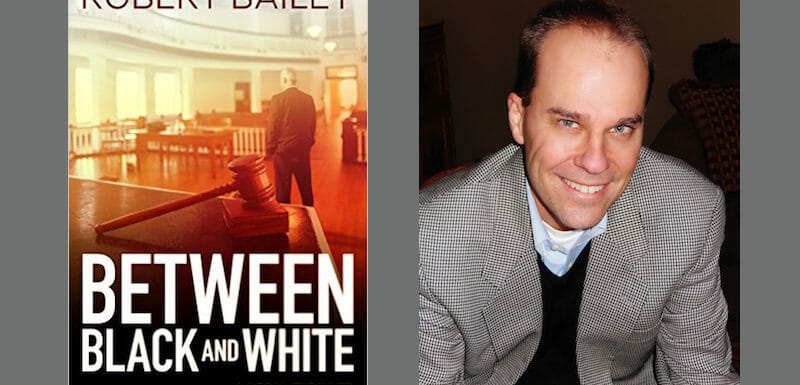 Robert Bailey is an attorney who represents health care providers in medical malpractice cases. He’s combined his experience with the law and his passion for writing into the legal thriller Between Black and White. Because Bailey lives in the South, the novel is also set there, which opens the door to many issues.
Robert Bailey is an attorney who represents health care providers in medical malpractice cases. He’s combined his experience with the law and his passion for writing into the legal thriller Between Black and White. Because Bailey lives in the South, the novel is also set there, which opens the door to many issues.
“The issue of race is at the heart of this story, and, in particular, the town of Pulaski’s struggle with its history as the birthplace of the Ku Klux Klan,” Bailey said. It was during the second draft of his debut novel, The Professor, when Bailey first began planning Between Black and White.
“During a difficult day of revisions,” Bailey said, “I started thinking of new ideas for novels and the following situation popped in my head: A five-year old African-American boy watches his father murdered by the Ku Klux Klan and grows up to be a lawyer whose quest is to bring the men who killed his father to justice. I thought Pulaski would be a natural and explosive setting for such a story given its Klan past.”
At the time, Bailey was struggling with the revisions, so he decided to work on his new idea. “I set it aside and wrote the entire standalone story, giving it the title, Between Black and White. When I was finished, I loved the main character, Bocephus Haynes, but the story was still a bit rough. I went back to The Professor and started a third draft, inserting Bo into the book for the first time. Bo’s presence in The Professor really made the third and final draft work.”
Bailey describes his stories as southern legal thrillers and wants readers to realize they will be authentic. “I want prospective readers to know that I’ve lived in the South, primarily in Alabama and Tennessee, my whole life and that I have practiced law for sixteen years.”
These cases are easy to Monday morning quarterback. A plaintiff’s attorney can work backward from the bad outcome…
Although he’s lived in the South his entire life, Bailey still did his research about the town of Pulaski. He said, “Though the story is entirely fictional, the restaurants identified in the book—Kathy’s Tavern, The Bluebird Café and Reeves Drug Store—are actual establishments in downtown Pulaski. Also, the events described in Chapter Two, including the plaque commemorating the formation of the KKK being turned upside down and the town essentially shutting down in 1989 to protest the Klan’s planned march with the Aryan Nation, were real life events.”
The South is one of those places with a rich and controversial background, which is similar to a medical malpractice case in some ways. Bailey said, “These cases are easy to Monday morning quarterback. A plaintiff’s attorney can work backward from the bad outcome and criticize the decisions and actions of the physician or nurse. As such, it is important to put the jury in my client’s shoes so that they can see, feel and understand the reasons why the doctor or nurse did what she did.”
As Bailey also pointed out, these same principles apply to crafting a good story. He said, “It is important to show the reader your character’s motivations and to put the reader in the shoes of the character. There are actually a number of parallels between writing stories and trying jury trials. I truly believe that being a trial lawyer has helped me be a better writer, and being a writer has helped me be a better trial lawyer.”

would love to read this it sounds like ones from JohnGrisham so good!
Would enjoy reading your book. Always interested in learning about new authors.